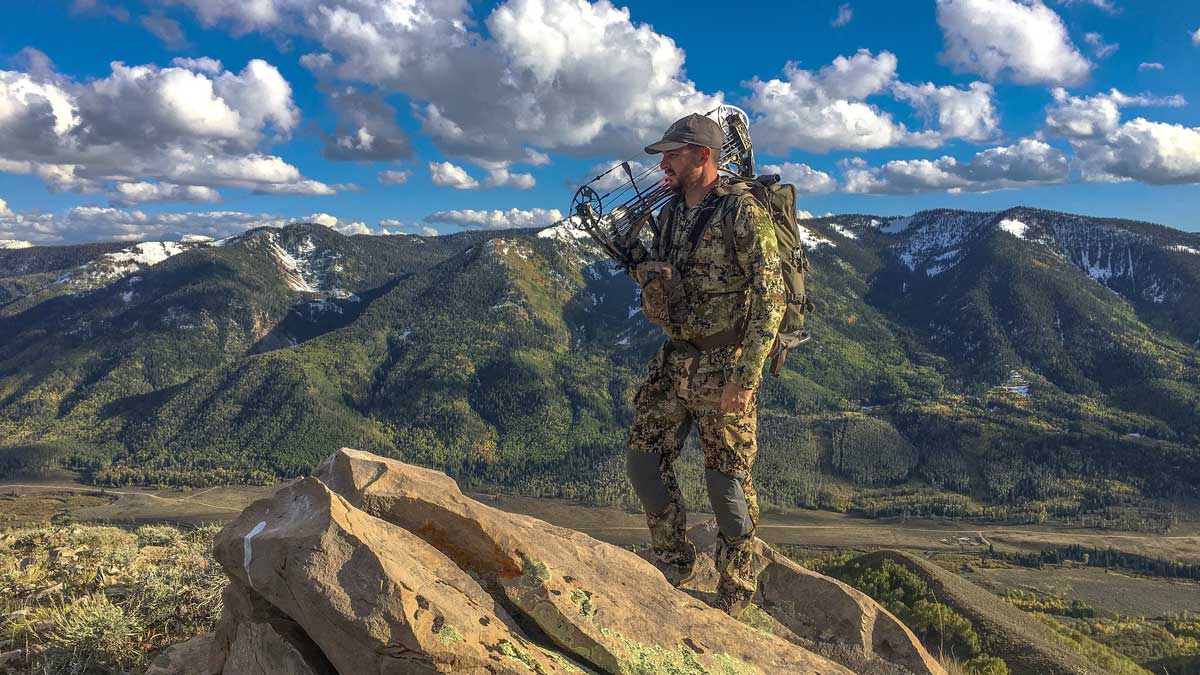A few simple steps can keep you from feeling like death on your next high-country elk hunt
Some elk live at sea level. Most do not. If your next elk hunt will take you to the high country, you need to know the signs of altitude sickness and how to deal with them—or better yet, prevent them altogether.
People can experience altitude sickness at 5,000 feet, but most start feeling symptoms around 8,000, and they get more pronounced the higher you go. Symptoms can range from feeling hungover to having bad case of the flu. Headaches are typically the first sign, followed by dizziness, vomiting, fatigue, trouble sleeping, lack of sweat. Sound like a Saturday morning in your 20s? It’s because these are also signs of dehydration. The solution: drink more water and avoid alcohol, which will dehydrate you even more.
As elevation increases, air pressure decreases. Less air pressure at higher elevations means fewer oxygen molecules are available for us to breathe. The percentage of oxygen in the blood is equal at both sea level and higher elevations, but the lack of oxygen in the air means we have to breathe faster to get the same amount of oxygen. Respiration causes us to expel water in the form of vapor. At just 6,000 feet, we exhale twice as often as at sea level. That costs us an additional quart of water loss every day.
While annoying and uncomfortable, altitude sickness, or acute mountain sickness, can get worse. Way worse. High altitude pulmonary edema or HAPE, is a build-up of fluid in the lungs and can be fatal within hours. Hunters with HAPE will be breathless even after rest and might have a cough, which produces white or pink frothy sputum. High altitude cerebral edema or, HACE, is a build-up of fluid in the brain. A severe headache, vomiting and lethargy will progress to unsteadiness, confusion, drowsiness and ultimately coma. HACE can kill in only a few hours. A person with HACE will find it difficult to walk heel-to-toe in a straight line. For both HACE and HAPE, immediate descent is essential.
The last thing hunters coming from low-elevation states (1,000 feet or less) to the high country of Colorado or Wyoming to chase elk want to do is lay around camp waiting to hunt. But a day or two in camp acclimatizing to the altitude is just what the doctor ordered. The American Heart Association recommends two days of acclimation at 8,000 feet and one day for each 2,000 feet above that. Acclimatization helps the cells get along on a smaller oxygen budget. Given more time and a slower gain in altitude, your body will gradually adjust and allow you to enjoy high-altitude hunting with few, if any, symptoms of altitude sickness.
You can’t exactly train for hunting at altitude without, well, altitude, but being in good shape makes it far more likely your lungs will be able to cope with the challenges of increased elevation. Being fit lowers your heart rate and increases your red blood cell count. Those red blood cells are important because they carry oxygen.
There are drugs out there that claim to reduce the effects of altitude sickness, but we’re not doctors. If you are interested in these, please consult your physician.
A good acronym for hunting at elevation is pretty good advice in general: READ. Rest at camp. Exercise at home. Acclimatize to the elevation. Drink plenty of (water). These four steps might just help you make it a high-alpine elk hunt to remember.
